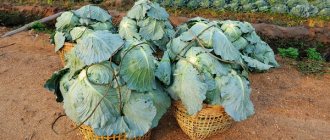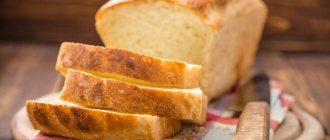The need to update sanitary requirements has been long overdue. The last time SanPiN for public catering was approved was 20 years ago. And these rules were indefinite. Now a specific period of validity has been established for them, since the market changes greatly even over several years.
SanPiN 2.3/2.4.3590-20 was approved by Resolution of the Chief State Sanitary Doctor of the Russian Federation dated October 27, 2020 No. 32. It includes the requirements of 17 acts in the field of catering and takes into account the nutritional characteristics of adults and children, as well as nutrition in various institutions: schools, hospitals, children's gardens, etc. Rospotrebnadzor notes one of the features of the new document - it places emphasis on the health-saving function of nutrition.
The rules in force from January 1, 2022 take into account new business formats that are actively developing today: catering, delivery, takeaway sales.
Let's look at all the innovations in order:
- Features of the new sanitary rules
- Seven principles of HACCP
- Advantages of new sanitary rules for small businesses
- Important changes in sanitary regulations from 2022
- What requirements have disappeared from SanPiN for catering?
Storing bread bread diseases
The main causes of bread diseases include the use of low-quality flour, violation of production technology and non-compliance with bread storage conditions.
In most cases, bread is affected by mold fungi. They leave characteristic spots of gray, yellow, green on the crumb. The main pathogens of mold on bread are two types of fungi:
It is noteworthy that the reason for the activation of fungi is not only a violation of the shelf life, but also the use of low-quality flour with microbiological indicators that do not comply with GOST. In raw materials infected with spores of moldy fungi, mycotoxins accumulate, which penetrate into the finished bread during the production process. Then, the finished loaves of bread become covered with spots of mold as soon as they are exposed to suitable conditions with high humidity and stagnant air.
It is important to note that bread with traces of mold is not recommended for consumption. Even cutting off the affected areas and burning the loaf with fire does not completely remove the fungal mycelium threads, which quickly spread throughout the crumb. Regular consumption of moldy bread can cause various diseases in humans:
During storage, bread can be affected not only by fungi, but also by yeast, potato bacillus and other microorganisms.
Common bread diseases:
How to prepare a vinegar rinse solution: step-by-step instructions
Depending on the type of hair and the degree of oiliness, the recipe may vary:
- Dry hair. It is recommended to use a less concentrated solution with a ratio of 1:6 (1 part vinegar and 6 parts water).
- Greasy hair. The recommended classic proportion is 1:4.
- Normal hair. Proportion 1:5.
To enhance the positive effects of vinegar rinsing, it is recommended to add decoctions of medicinal herbs or essential oils to the solution.
We recommend reading: How to Keep Black Breasts Fresh
For example, with dry scalp or seborrhea, a decoction of burdock or nettle will come to the rescue. Vinegar rinses with the addition of a decoction of chamomile flowers or calendula will help get rid of dry scalp. To cope with increased oiliness of hair, it is worth adding a decoction of oak bark to the rinse.
How to prepare a vinegar rinse mixture (video)
Hair vinegar: simple and effective hair care that will help make your hair healthy and beautiful without the use of expensive hair care products.
Shelf life of bread
The time frame established for preserving the freshness of bread by GOST is determined by such indicators as the type of bread and the environmental conditions in which it is stored.
The shelf life of bread is short. The countdown begins immediately after production. Within 6-24 hours (each type of bread has its own aging period at the bakery), freshly baked bread must be delivered to the store. A maximum of 36 hours is allotted for implementation. As a result, the buyer has 1-2 days left to eat the purchased bread.
The shelf life of each type of bread is different and is shown in the table below.
Storage conditions for bread and bakery products
The activity of bread staling is determined by such indicators as air temperature and humidity, type of product, as well as the presence of packaging and its quality. Therefore, it is necessary to store bakery products under the following conditions with mandatory adherence to the established deadlines:
The maximum intensity of staling is observed at a temperature of -2-+20°C. The staling process stops completely at temperatures below -10°C. Therefore, freezing as a storage method is very effective, but expensive. It is much more profitable to sell bakery products in packaging that extends their shelf life.
Thus, it is recommended to pack bread in plastic film or special paper. Its use allows you to extend the shelf life of bread up to 72 hours (according to GOST).
Why does it quickly deteriorate and become moldy?
Any product made from flour deteriorates in two ways: either it becomes stale or moldy. In the first case, it becomes tasteless, in the second – harmful and hazardous to health.
When baking, the starch in the flour turns into a paste, absorbing moisture. Over time, he gives it away, the moisture gradually evaporates. Bread practically does not go stale at temperatures below 10 degrees or above 60 degrees. Stale crumb is poorly saturated with gastric juice, therefore, it is less easily digested and absorbed.
As for mold and other harmful microorganisms that cause damage to baked goods, they are always present on the surface of the grain. When grinding, they fall into flour, and then into bread. If it is not baked well, then microbial spores begin to germinate. Therefore, mold is often found inside loaves. The fluffy “carpet” can be of different colors: white, orange, gray. The outside of the crust is baked and thus disinfected quickly, but heat treatment of the middle of large products takes time. Spoilage is accelerated by improper storage conditions.
What solution is used to wipe bread storage shelves?
The place where bread is stored must be regularly cleaned and ventilated. The shelves on which bread is stored must be treated with a special solution. This helps prevent mold growth and unpleasant odors.
To begin with, the shelves are wiped with soapy water, then treated with a 1% vinegar solution. Then the surface is wiped dry and allowed to dry completely. This procedure is regulated by SanPiN and is mandatory in production.
It is not advisable to wipe shelves with undiluted acetic acid. This can affect the taste of the bread and cause an unpleasant odor.
What is the best way to wipe bread shelves?
Shelves intended for storing bread are maintained in a certain order.
As the racks are cleared of products, they are swept with a brush labeled “bread.” Of course, it is strictly prohibited to use it for other purposes.
If you are looking for the name of a suitable solution, then know that there are no ready-made formulations. Every other day, the shelves are thoroughly wiped with a rag reserved for this purpose with a solution of acetic acid with a strength of 1 percent. The mixture is kept in a labeled, tightly closed container.
New portions are prepared as needed. It’s easy to make a solution - per liter you will need:
- 17 milliliters of 60 percent acid and 983 ml of boiled water;
- 14 ml 70% – for 986 ml;
- 13 ml 80% – for 987 ml.
To avoid confusion about proportions in the future, it is recommended to print out the above recipe and hang it on the wall of the room where baked goods are stored.
How to store bread in the kitchen
You need to store bread at home correctly:
- After purchasing, it is better to remove the bread from the plastic packaging. If the packaging is paper, you can simply open it slightly. It is best to wrap the bread in a cotton or linen cloth. This will allow the bread to breathe and not go stale prematurely.
- Bread bins manufactured in accordance with GOST ensure the freshness of bread for 60 hours. If different types of bread are stored in a bread bin at the same time, it is advisable to wrap each loaf in a separate paper bag or fabric bag.
- You can store bread in the refrigerator for up to 7 days. The product can be kept in a bag with holes to prevent condensation. A suitable place is the bottom shelf. Wheat bread retains its freshness well in the refrigerator, but black and Borodino bread does not store well in conditions of low air temperature.
Bread bin for storing bread, which one is better?
The choice of home bread bin depends solely on personal preferences and ease of use:
- A wooden bread box is the most environmentally friendly in terms of material used. In addition, the wooden product has a beautiful design and convenience. But, a wooden bread box quickly absorbs foreign odors, which are transferred to baked goods during operation. Due to temperature changes and sudden changes in humidity, wood easily swells and then cracks. Another significant drawback is the inability to fully wash the product.
- The plastic bread box is easy to clean and durable. Plastic is easy to care for, which allows you to get rid of odors, mold, and crumbs in a timely manner. The disadvantage is that it is not always possible to be sure of the quality of the plastic and the absence of toxic compounds in it.
- A stainless steel metal bread box is an ideal option. This metal is not afraid of moisture, cleaning agents and odors. This bread box is durable and is not afraid of impacts or corrosion.
- Bread bins made of glass and ceramics fit well into any interior, while perfectly preserving the freshness of bread. Disadvantage: increased fragility.
General sanitary requirements
The premises selected for storing bread must meet certain criteria. The main ones are:
- maximum dryness;
- availability of high-quality ventilation.
The requirements for storage, trade and transportation of the product in question contain the relevant Rules, put into effect in 1983 by Order 228 of the USSR Ministry of Trade.
An important point is that as soon as products are removed, it is necessary to thoroughly clean racks, shelves, containers and boxes from:
- crumbs;
- flour powder;
- other product remnants.
They must also be wiped dry.
In situations where even subtle signs of damage to baked goods by potato sticks or other microflora are detected, the local unit of the State Sanitary and Epidemiological Supervision should be immediately notified. In this case, the entire delivered batch is withdrawn both from the warehouse and directly from the sales floor. How to use it in the future is decided by specialists after conducting the necessary tests.
Workers responsible for the sanitary condition of the premises are required to thoroughly wash with disinfectants all shelves, cabinets, and racks where contaminated products were previously stored. Current regulations require that in this case, disinfection be carried out with a solution of acetic acid with a strength of at least 3 percent.
How to store bread in the refrigerator
At low temperatures, the process of bread staling slows down significantly. Therefore, bread can be stored in it for up to 7 days. But, the refrigerator is not the most suitable place for storage.
- Firstly, the refrigerator is filled with different aromas of dishes and products. In any case, they will penetrate the bread and even a plastic bag will not become an obstacle to this.
- Secondly, there is high humidity in the refrigerator compartment. This is what will cause the bread to become moldy.
- Thirdly, if the bread you put in the refrigerator is already contaminated with fungal spores, the entire refrigerator compartment will be contaminated.
Rinsing hair with apple cider vinegar (video)
In addition, vinegar rinse is contraindicated:
- owners of hair that is too dry and brittle (may further damage weakened curls);
- in the presence of the slightest damage to the scalp;
- immediately after recently dyeing your hair and performing a perm procedure.
You must always follow the recipe and strictly observe the ratio of components, and also do not use too concentrated solutions. For dry hair, it is recommended to rinse off the vinegar rinse with clean warm water.
Important!
If you experience any unpleasant sensations (burning, itching or other discomfort) while using a vinegar rinse or a vinegar-based mask, you should immediately stop using them and rinse your hair thoroughly under running water. About how to properly wash your hair -.
Regularly rinsing your hair with vinegar will return your hair to a healthy appearance, make combing much easier, and help get rid of annoying dandruff and excess oil. If you follow the recipe instructions and do not violate the proportions, the result will not take long to arrive.
Ordinary table vinegar 9%
has many valuable properties and is useful for housewives in the household; it is used in one way or another almost every day. The use of vinegar is quite widespread, since its price is low, but its benefits are enormous, and not only in the preparation of various dishes and preserves for the winter. Let's look point by point at all (or almost all) the beneficial properties of vinegar, which will be useful to many, some of which you know and have been putting into practice for a long time, as mom and dad taught.
So, the benefits of vinegar
is enormous, the use of vinegar is very wide both in cooking and in cleaning and disinfecting an apartment, even in medicine.
- Initially, cool the armpits, elbows and popliteal folds with a cloth moistened with the solution.
- It will be good if you lightly moisten your body with vinegar water, not forgetting your back and chest.
- If necessary, repeat the procedure no earlier than an hour later.
- You can’t make any effort or rub in; movements should be light.
- If the temperature is in no hurry to drop, lower it by placing a wet cloth with a solution of water, vinegar and vodka on the patient’s forehead, including the temporal part. Moisten the napkin periodically.
Let's work together to make the unique material even better, and after reading it, we ask you to repost it on a social network convenient for you. net.
Bread in the freezer, how to defrost it afterwards
Storing bread in the freezer ensures long-term preservation of its freshness and vitamin and mineral composition. True, only fresh or, at least, yesterday’s bread is suitable for freezing.
The optimal way to freeze bread is to first cut the loaf into pieces, then place them in a freezer bag or foil. This makes it much easier to defrost bread. Defrosting is carried out at room temperature for 3-4 hours.
How to properly care for your homemade bread bin
Maintaining the proper condition of the container for storing bread at home is an equally important preventive measure.
Many housewives notice that even in a high-quality and environmentally friendly bread box made of wood, the product often spoils very quickly. For many, the reason remains a mystery. Meanwhile, the answer is quite simple - this happens due to improper care of the storage.
According to the rules, the bread bin should be emptied of accumulated crumbs and thoroughly rinsed with warm water at least three times a week. Moreover, at least once during the mentioned period of time, it is recommended to use the vinegar solution, which we wrote about above. This type of care allows you to completely destroy dangerous microflora, which, first of all, negatively affects the shelf life of the product.
If you notice that mold is constantly forming on the bread, then wipe the container where it is stored with a piece of lemon peel. It is then advisable to leave it inside for the whole night.
Vinegar and lemon juice are great for keeping ants out of your bread box.











